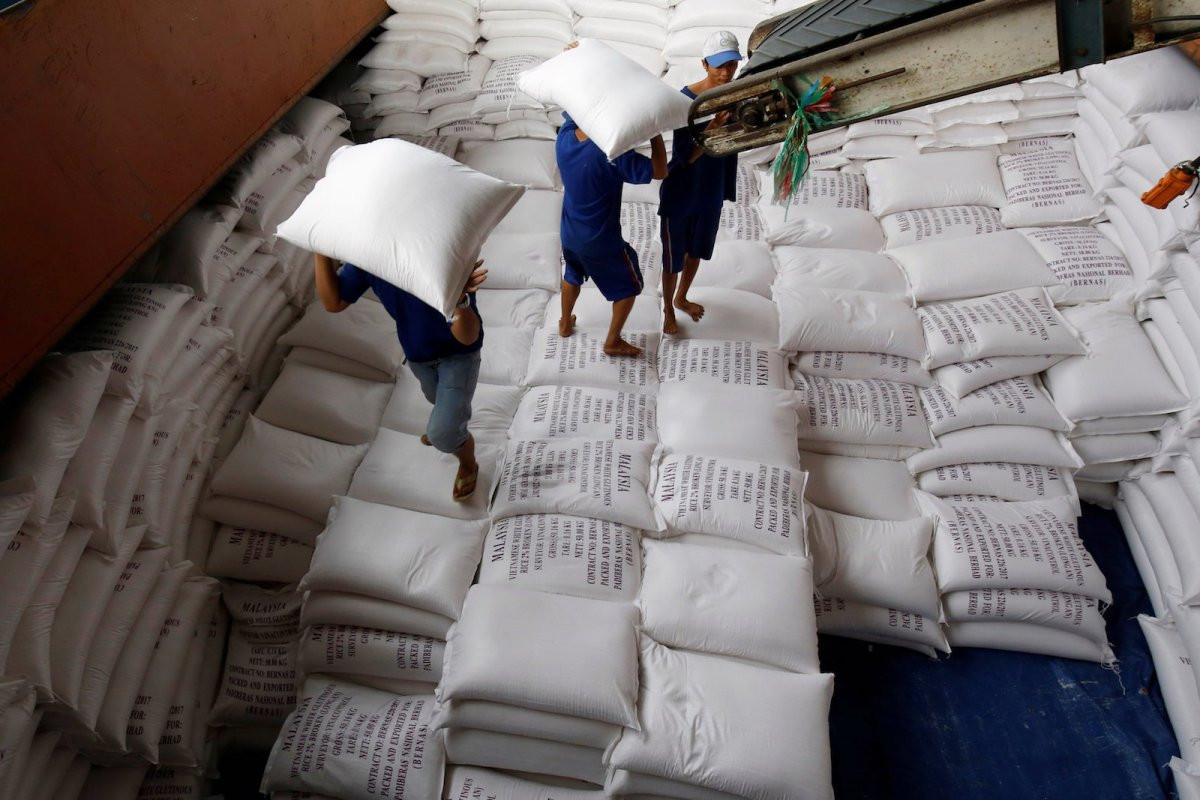
At a meeting on the situation of rice exports in the first half of the year held by MARD on Thursday in Ha Noi, Le Thanh Hoa, deputy director of MARD's Department of Quality, Processing and Market Development said the rice production industry is predicted to have a positive outlook in the last six months of the year because many Asian countries producing rice face a risk of falling output due to the impact of El Nino.
That will push the demand as well as the price up on the global rice market.
Viet Nam's rice export is forecast to raise as demand for the commodity in the Philippines, China and Indonesia is higher than expected, Hoa said.
There are many advantages to rice exports, especially at the end of the year because major markets are still buying strongly, including China, the Philippines and Malaysia, according to Bui Thi Thanh Tam from the Viet Nam Food Association.
In the next few days, Indonesia will continue to open bids on buying 300,000 tonnes. The country plans to open many other bids for rice. This will make prices in other countries increase, or at least not decrease, Tam said.
She also noted that the Philippines is Viet Nam's largest rice export market. The rice exports from Viet Nam to China have had high growth since China reopened early this year.
Meanwhile, Indonesia has started importing rice again, so Viet Nam's rice exports to this market had a strong growth rate of over 1,498 per cent.
According to Hoa, rice exports from Argentina, Brazil, Myanmar, China, Pakistan and the US have reduced, while rice shipments from Australia, Cambodia, India, Thailand and Viet Nam have increased.
The demand for rice is expected to increase slightly, possibly due to the limited supply of other food sources. Strict markets and some newly opened markets, such as Europe, South Korea, Australia and Middle East countries, will create opportunities for Viet Nam to increase the export of high-quality rice.
Meanwhile, in the ASEAN region, Vietnamese rice still holds a large market share in the Philippines as customers know the quality of the rice and Vietnamese traders have logistics advantages against other suppliers.
Besides that, the demand in traditional markets like Indonesia and China, has increased again.
To promote rice production and exports, Hoa said that it is necessary to review and update standards for the value chain according to the demands of the international market.
There are activities to update market information, and support for production, preservation, processing, quality, safety and traceability of rice.
The ministry needs to develop a decree on the management of agricultural brands, including rice products, to submit to the Government for approval.
Meanwhile, the ministry continues to accelerate the development of the project to sustainably develop one million hectares of high-quality rice with sustainable methods in the Cuu Long (Mekong) Delta.
It will also submit to the Government a proposal for a project on developing the logistics system to improve the quality and competitiveness of Vietnamese agricultural products by 2030.
However, businesses still face many difficulties in investing in production and improving rice quality. Therefore, Minister of Agriculture and Rural Development Le Minh Hoan said the ministry will soon meet with the Ministry of Industry and Trade to discuss solutions for supporting businesses to seize export opportunities in the global rice market.
It also is necessary to explore mechanisms and policies to support the restructuring of the rice industry to improve quality and value.
Promoting linkages in high-quality rice production and diversifying export markets is also a priority, Hoan said.
Truong Sy Ba, chairman of Tan Long Group, said that rice trading enterprises have not been able to access medium- and long-term loans, and mainly rely on short-term capital for purchasing rice.
He has suggested the Government should have more preferential policies for long-term investment. Interest rates are a big barrier for businesses in purchasing rice for export, he added.
The Department of Quality, Processing and Market Development reported Viet Nam's export volume of rice in the first six months of 2023 reached 4.27 million tonnes, earning US$2.3 billion, up 22.2 per cent in volume and up 34.7 per cent in value over the same period in 2022.
The average export price of rice in the first six months is estimated at $539 per tonne, up 10.2 per cent over the same period in 2022.
According to MARD, the rice industry expects to gain an output of 43.11 million tonnes this year, a slight increase compared to 2022. Rice exports are expected to reach around 8 million tonnes in 2023, worth more than $4 billion. — VNS